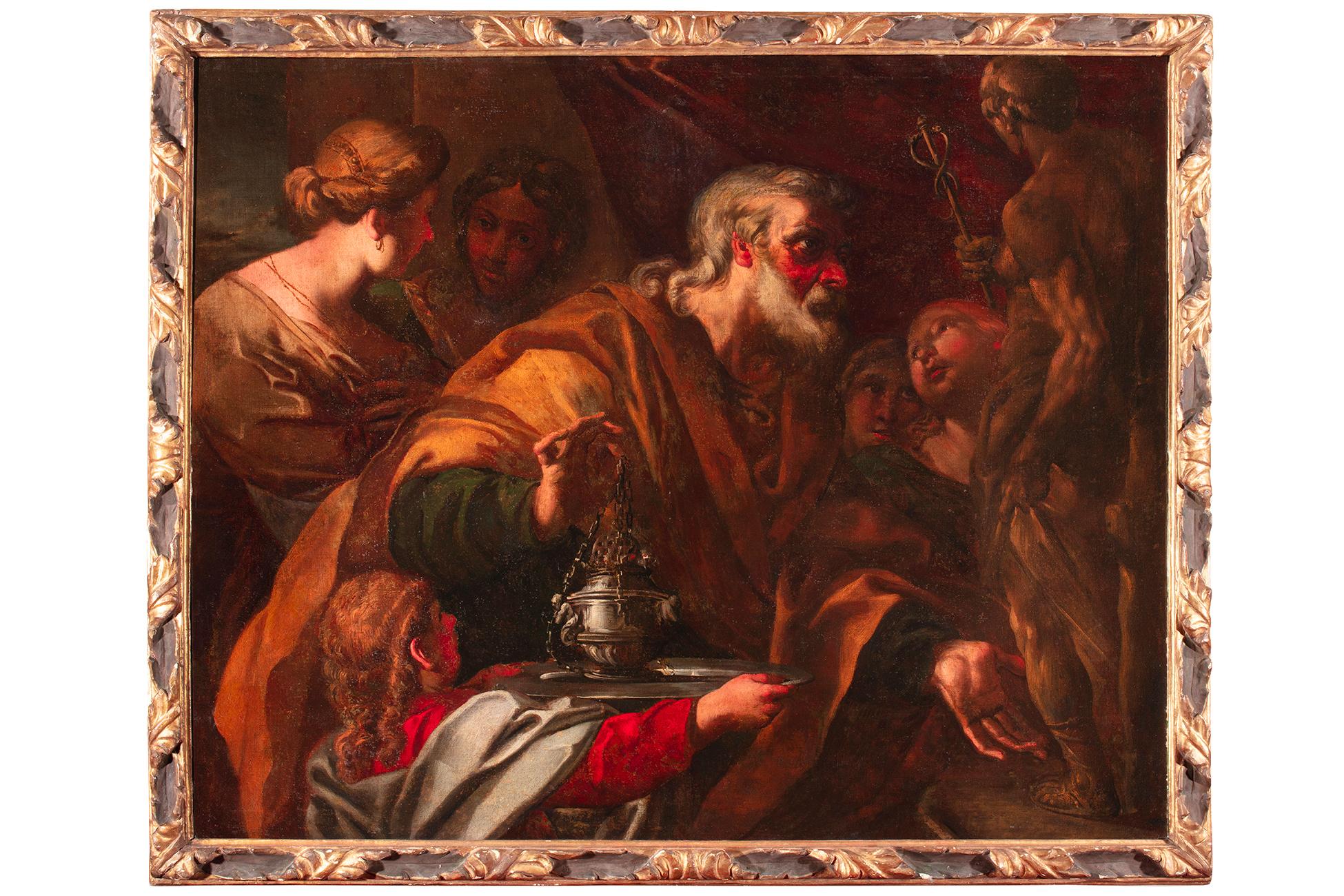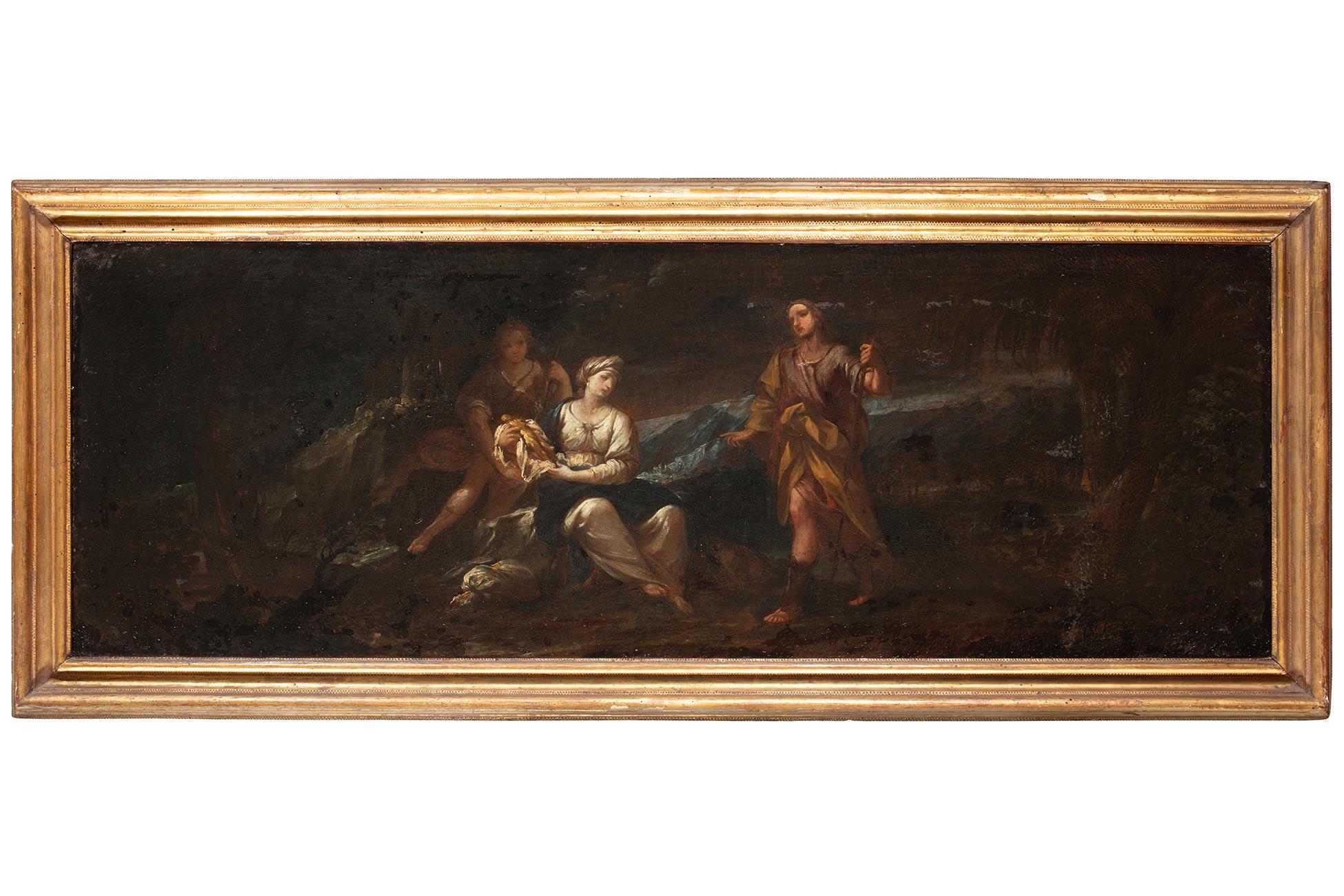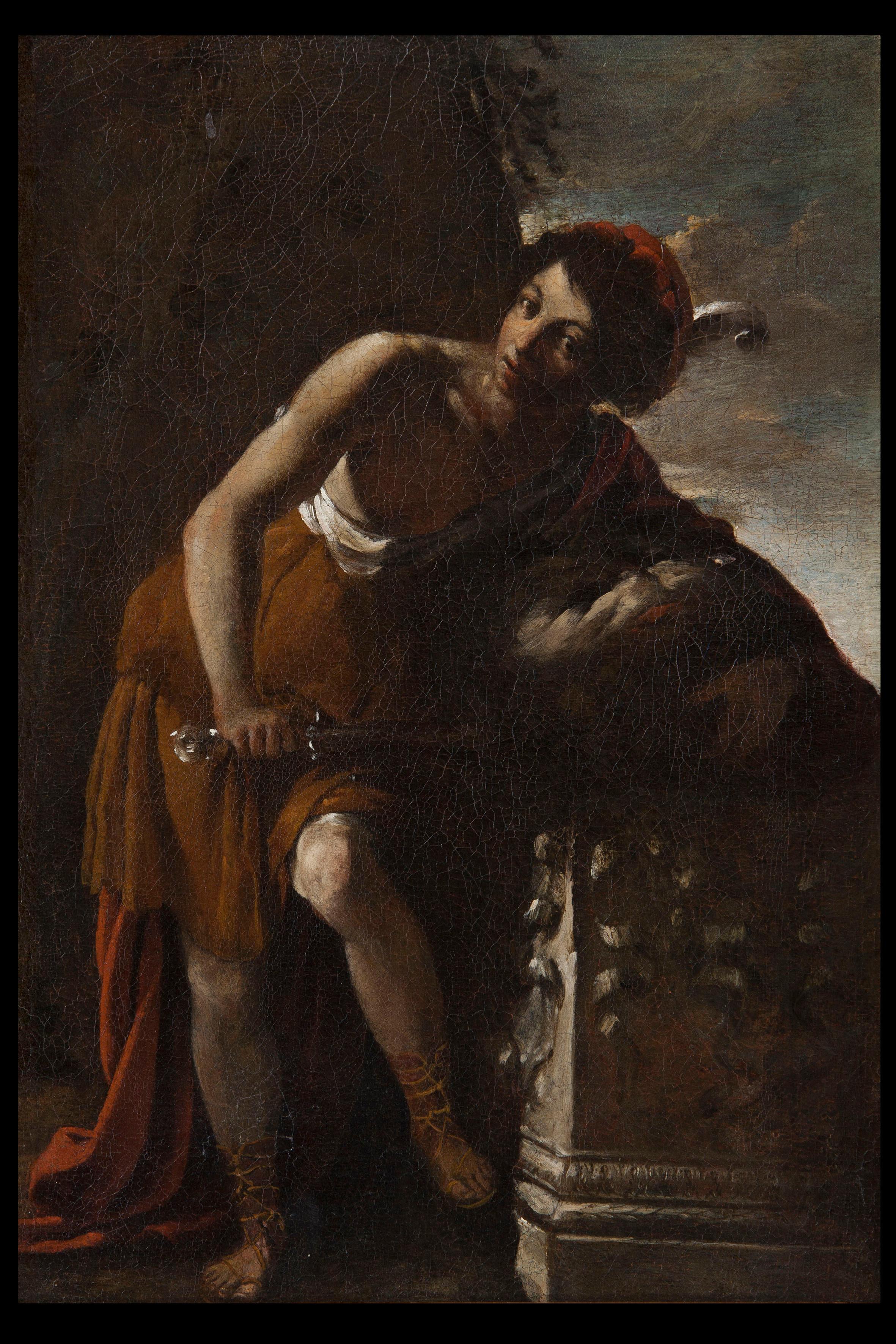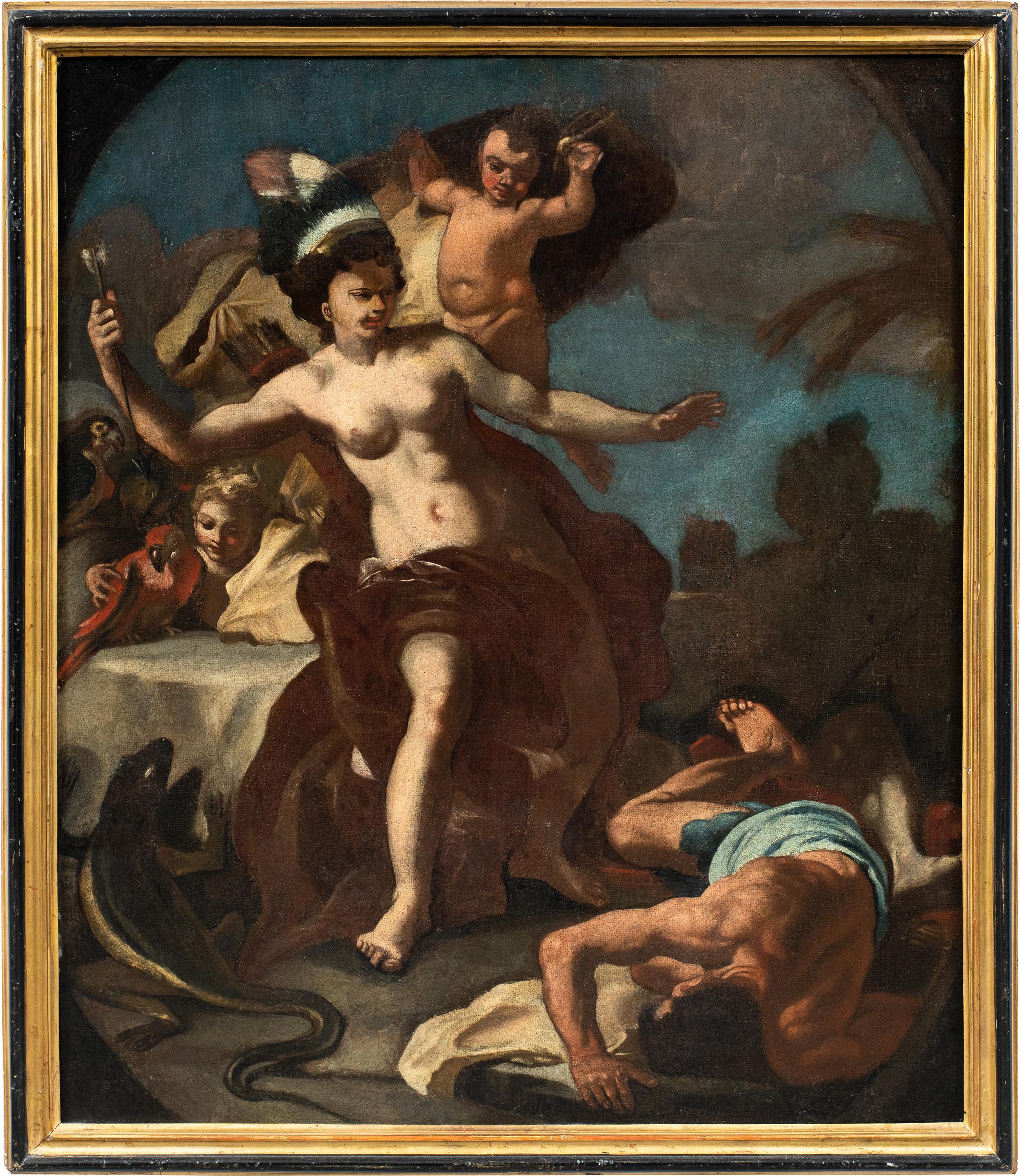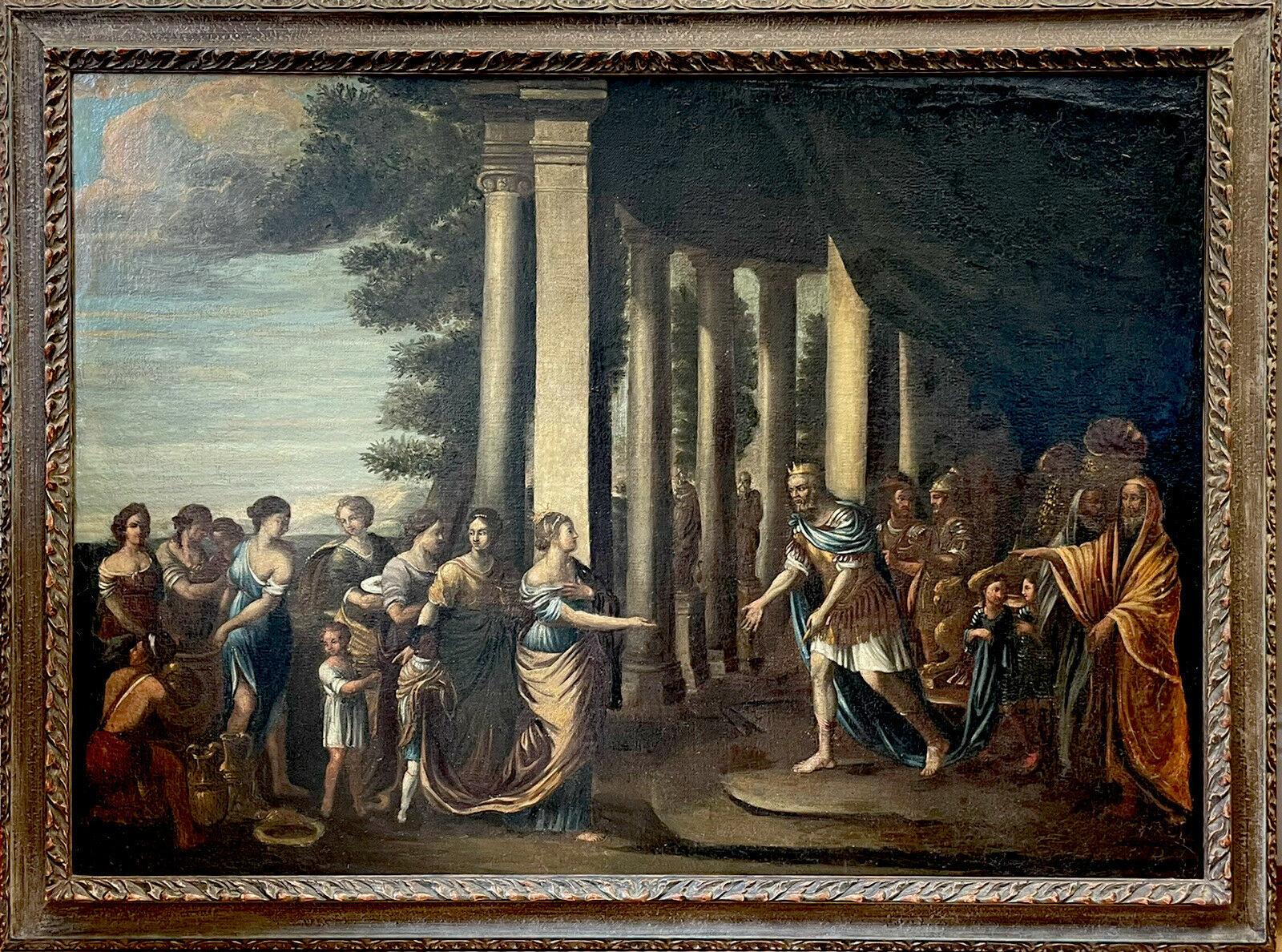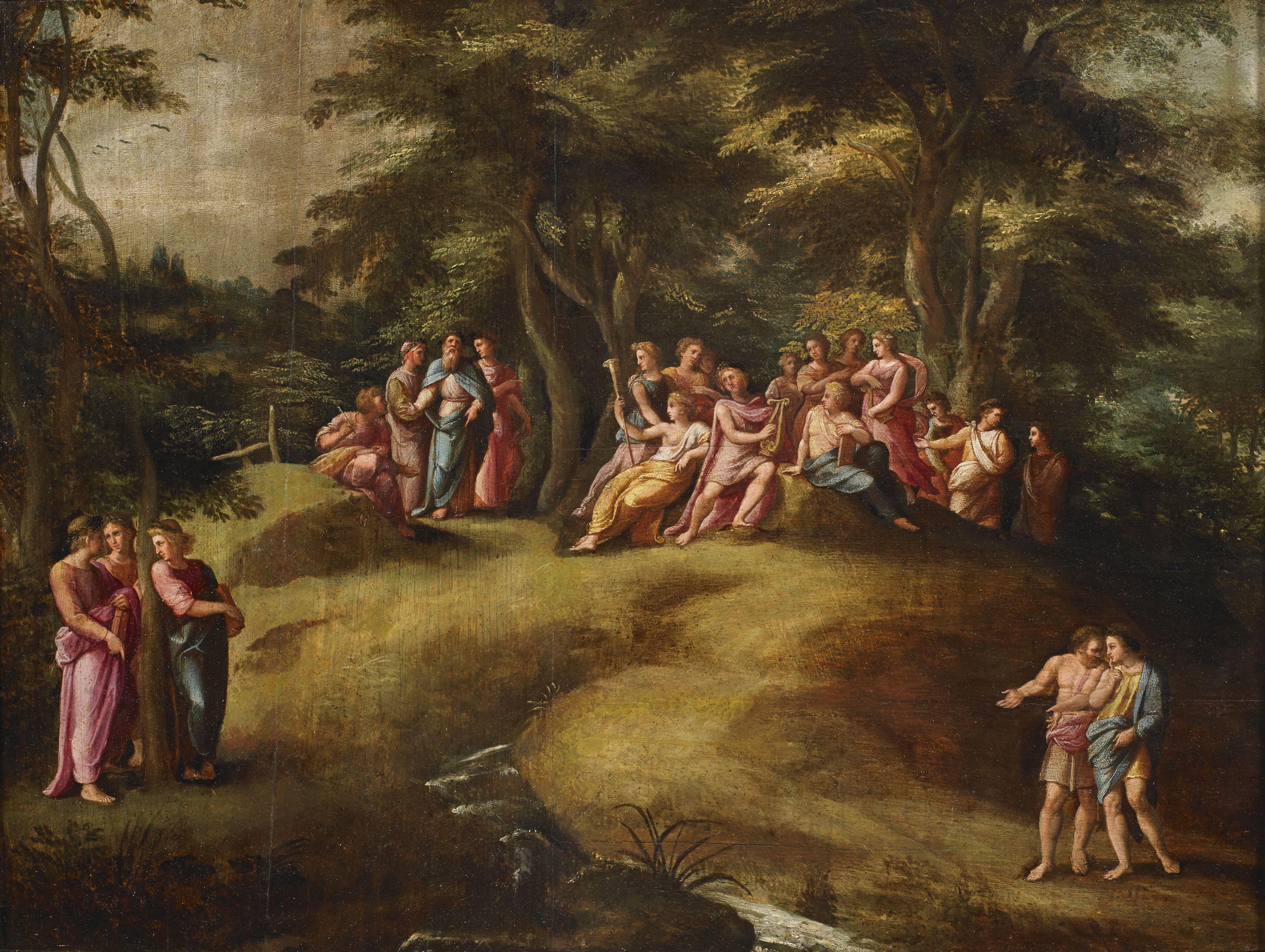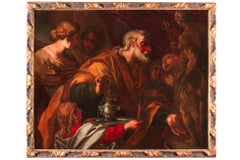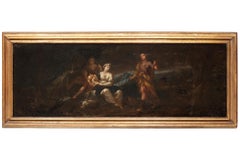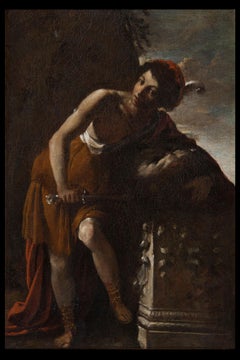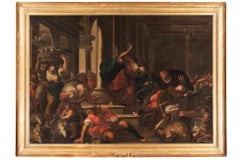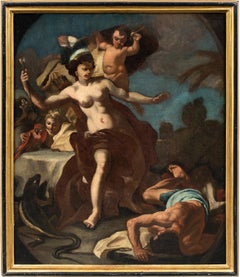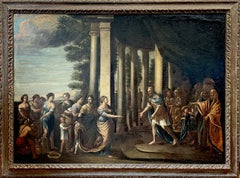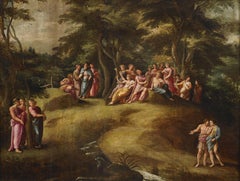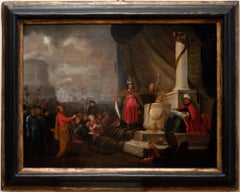Items Similar to 17th Century By Antonio Balestra Solomon Sacrificing to the Idols Oil on Canvas
Want more images or videos?
Request additional images or videos from the seller
1 of 12
Antonio Balestra17th Century By Antonio Balestra Solomon Sacrificing to the Idols Oil on CanvasEnd of 17th century
End of 17th century
$16,784.04
$20,980.0420% Off
£12,568.99
£15,711.2420% Off
€14,160
€17,70020% Off
CA$23,489.54
CA$29,361.9320% Off
A$25,754.43
A$32,193.0420% Off
CHF 13,448.76
CHF 16,810.9520% Off
MX$309,922.26
MX$387,402.8220% Off
NOK 169,500.20
NOK 211,875.2520% Off
SEK 159,373.79
SEK 199,217.2320% Off
DKK 107,863.95
DKK 134,829.9420% Off
About the Item
Antonio Balestra (Verona, Italy, 1666 - 1740)
Title: Solomon Sacrificing to the Idols
Medium: Oil on canvas
Dimensions: without frame 73 x 98 cm
Painting without frame.
Born in Verona in 1666, Antonio Balestra began his training in Rome where he became a pupil of Carlo Maratta (1625 – 1713), an Italian painter active mostly in Rome. Thanks to his apprenticeship with Carlo Maratta he was able to develop a highly personal artistic vocabulary capable of combining Venetian colourism with a Roman-style compositional magniloquence. This beautiful painting depicts the story of King Solomon who, old and prey to the temptations of his young wives, decides to turn his devotion to pagan idols. The intertwining of gestures and faces combined with the colours typically associated with Balestra make this work an interesting example of the artist's maturity.
- Creator:Antonio Balestra (1666 - 1740)
- Creation Year:End of 17th century
- Dimensions:Height: 28.75 in (73 cm)Width: 38.59 in (98 cm)Depth: 1.97 in (5 cm)
- More Editions & Sizes:without frame 73 x 98 cm - Painting without framePrice: $21,099
- Medium:
- Movement & Style:
- Period:Late 17th Century
- Condition:
- Gallery Location:Milano, IT
- Reference Number:1stDibs: LU1701213661612
About the Seller
5.0
Vetted Professional Seller
Every seller passes strict standards for authenticity and reliability
Established in 1964
1stDibs seller since 2021
- ShippingRetrieving quote...Shipping from: Milano, Italy
- Return Policy
Authenticity Guarantee
In the unlikely event there’s an issue with an item’s authenticity, contact us within 1 year for a full refund. DetailsMoney-Back Guarantee
If your item is not as described, is damaged in transit, or does not arrive, contact us within 7 days for a full refund. Details24-Hour Cancellation
You have a 24-hour grace period in which to reconsider your purchase, with no questions asked.Vetted Professional Sellers
Our world-class sellers must adhere to strict standards for service and quality, maintaining the integrity of our listings.Price-Match Guarantee
If you find that a seller listed the same item for a lower price elsewhere, we’ll match it.Trusted Global Delivery
Our best-in-class carrier network provides specialized shipping options worldwide, including custom delivery.More From This Seller
View All17th Century by Filippo Abbiati Solomon sacrificing to idols Oil on Canvas
Located in Milano, Lombardia
Filippo Abbiati (Milan, Italy, 1640 - 1715)
Title: Solomon sacrificing to idols
Medium: Oil on canvas
Dimensions: without frame 117 x 146 cm – with frame 131 x 158 cm
Antique cassett...
Category
Late 17th Century Old Masters Figurative Paintings
Materials
Canvas, Cotton Canvas, Oil
17th Century by Felice Torelli Rachel Hiding the Idols Oil on Canvas
Located in Milano, Lombardia
Felice Torelli (Verona, Italy, 1667 - Bologna, Italy, 1748)
Title: Rachel Hiding the Idols
Medium: Oil on canvas
Dimensions: without frame 41 x 116 cm -...
Category
Late 17th Century Old Masters Landscape Paintings
Materials
Canvas, Oil, Cotton Canvas
Early 17th Century by Carlo Bononi The triumph of David Oil on canvas
Located in Milano, Lombardia
Carlo Bononi (Ferrara, Italy, 1569 – 1632)
Title: The triumph of David
Medium: Oil on canvas
Dimensions: without frame 41 x 28.5 cm – with frame 57 x 46 x 6 cm
Not signed
Provenance...
Category
Early 17th Century Old Masters Figurative Paintings
Materials
Canvas, Oil
17th Century by Giulio Benso The Expulsion of the Merchants From the Temple
Located in Milano, Lombardia
Giulio Benso (Genoa, Italy, 1592 - 1668)
Title: The Expulsion of the Merchants From the Temple
Medium: Oil on canvas
Dimensions: without frame 121 x 170 cm - with frame 144 x 193 cm
...
Category
Early 17th Century Old Masters Figurative Paintings
Materials
Oil, Canvas
17th Century by Giovanni Domenico Ferrucci The Death of Cleopatra Oil on canvas
Located in Milano, Lombardia
Giovanni Domenico Ferrucci (Fiesole, Italy, 1619 – Lucca, Italy, post 1669)
Title: The Death of Cleopatra
Medium: Oil on canvas
Dimensions: without frame 85 x 70.7 cm – with frame 10...
Category
17th Century Old Masters Figurative Paintings
Materials
Canvas, Oil
18th Century By Vincenzo Re Christ Healing a Paralytic Oil on Canvas
Located in Milano, Lombardia
Vincenzo Re (Parma, Italy, 1695 - Naples, Italy, 1762)
Title: Christ Healing a Paralytic
Medium: Oil on canvas
Dimensions: without frame 50 x 62 cm - with frame 70 x 92 cm
Expertise...
Category
18th Century Old Masters Landscape Paintings
Materials
Oil, Canvas
$8,344 Sale Price
20% Off
You May Also Like
Rococò Neapolitan painter - 18th century figure painting - Allegory of America
Located in Varmo, IT
Francesco Solimena (Canale di Serino 1657 - Barra 1747) workshop - Allegory of America.
76.5 x 64.5 cm unframed, 83 x 69.5 cm with frame.
Antique oil painting on canvas, in a lacqu...
Category
Mid-18th Century Baroque Figurative Paintings
Materials
Canvas, Oil
$3,555 Sale Price
33% Off
HUGE 17thC ITALIAN OLD MASTER OIL PAINTING - KING & COURT FIGURES ROMAN BUILDING
Located in Cirencester, Gloucestershire
Artist/ School: Italian School, 17th century.
Title: A King and Queen before court figures, amidst a classical landscape with Roman columns.
Medium: oil painting on canvas, framed
...
Category
17th Century Old Masters Figurative Paintings
Materials
Canvas, Oil
16th Century Parnassus Biagio Pupini called Biagio delle Lame Muses Oil on Panel
Located in Sanremo, IT
This painting (in an excellent state of conservation and of fine executive workmanship, attests to the enormous
luck of Raphael's inventions in the years following his death: in fact...
Category
16th Century Italian School Figurative Paintings
Materials
Oil, Panel
Adoration of the Golden Calf - Oil Painting by Willemsz I de Wet - 17th century
Located in Roma, IT
The Adoration of the Golden Calf is an original modern artwork realized by Jacob Willemsz I de Wet (Haarlem, c. 1610 – between 1675 and 1691) in the half o...
Category
1950s Modern Figurative Paintings
Materials
Canvas, Oil
17th Century Oil on Canvas Venetian Antique Painting The Sacrifice of Isaac 1670
Located in Vicoforte, Piedmont
Venetian school of the 17th century. Great oil on canvas artwork depicting a biblical episode, the sacrifice of Isaac. To test the faith of Abraham, a just and devout man, God orders...
Category
Antique 1670s Italian Paintings
Materials
Canvas
Diana Boullogne Mythological Paint Oil on canvas old master 17/18th Century
Located in Riva del Garda, IT
Bon Boullogne (Paris, 1649 - Paris, 1717) workshop of
Episodes from the myth of Diana
oil painting on canvas
Dimensions: 84 x 114 cm.
with antique frame 100 x 132 cm.
The beautiful painting proposed shows a series of episodes taken from the myth of the divinity Diana, the Roman divinity of hunting, forests and wild animals, masterfully captured in this valuable painting, which shows a luxuriant wood, a favorite place of the divinity, as a theater of his adventures.
The composition opens, on the left, with a sort of presentation of the divinity, portrayed as an attractive young girl, surrounded by her faithful Nymphs, one of whom holds her quiver with arrows, and by one of her beloved dogs. hunting her.
The 'story' continues in the central part where we can see the divinity during a wild boar hunt...
Category
Late 17th Century Old Masters Paintings
Materials
Oil
$8,382 Sale Price
20% Off
